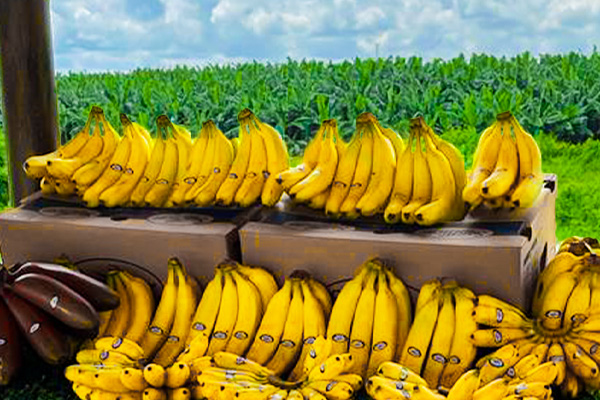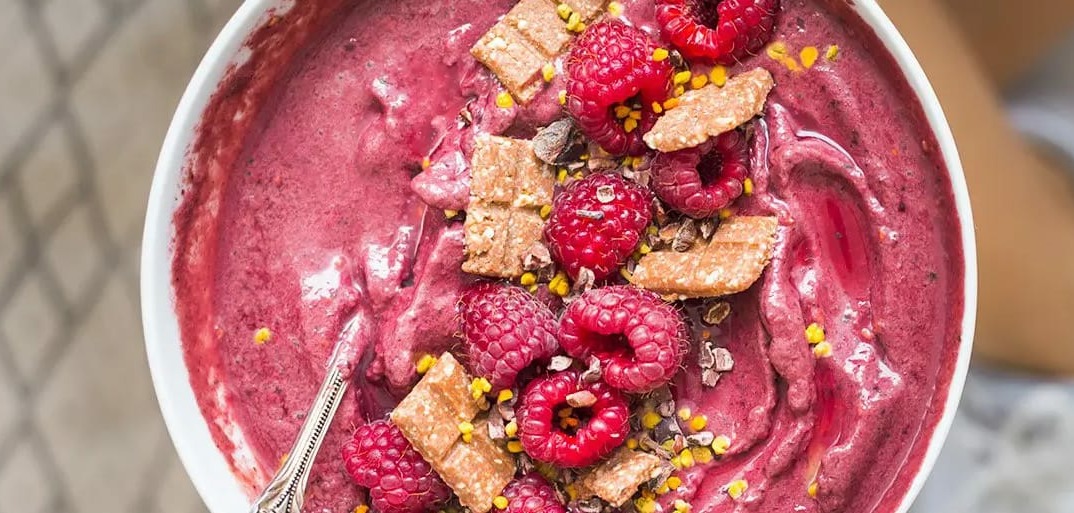
Hacienda Magdalena – bananas for dreaming.
“This is how bananas should taste,” says picker Dalember Carbo proudly. The bananas here at Hacienda Magdalena are a sunny yellow, beautifully sweet and wonderfully creamy. The hacienda is located in a coastal region in the province of Los Rios, in Costa Rica.
If there is one place in the world where bananas really thrive, it is Ecuador. Because in this Central American country, the sweet fruit has everything it loves: lots of sunshine and constant temperatures with plenty of rainfall. But that’s not all: “We simply give them more time to ripen here,” explains Dalember. That’s why the fruit is allowed to stay on the tree longer than usual. They can ripen in peace for a whole 12 to 13 weeks, giving them plenty of sweetness from the sun.
And it’s not just the yellow fruit that feels at home at Hacienda Magdalena, but also the people who work here. They are regularly trained to provide the plants with the best possible care. Many use the free shuttle to and from work in the morning and evening. Lunch is also free, and a company doctor looks after people’s health. “We live and work here in harmony with nature. Maybe that’s why the result tastes so good,” says Dalember – and beams!

The cultivation makes the difference.
But what is behind the special quality of our bananas?
- Our creamy-sweet bananas ripen for 12-13 weeks for plenty of sweetness from the sun.
- There are more drainage channels in our fields to prevent waterlogging during rainfall. This means fewer plants per square meter and therefore better quality.
- We look after our plants lovingly and carefully. To do this, we employ more people than average.
- We analyze the soil in our fields every year. This tells us everything we need to know about the needs of the plants and enables us to make changes.

In harmony with people and nature.
We use water sparingly, reduce the use of pesticides and use crop residues as organic fertilizer. We also plant trees on the river banks and aquatic plants and reforest. The growing trees prevent the soil from being eroded. In this way, we create new habitats for plants and wild animals.
We are also committed to our employees. The more than 120 employees are shuttled to the finca every morning. They receive free meals and the company doctor looks after their health on the finca. There are school scholarships for the children, free training opportunities and fair pay. We cooperate with a sports school with many leisure activities. In this way, we create ideal conditions for our employees, their families and the environment – and you support this with every purchase of our bananas.

Responsibility with letter and seal.
Hacienda Magdalena fulfills the requirements for sustainable agriculture, the basis of Rainforest Alliance™, GLOBAL G.A.P. and G.R.A.S.P. This means:
- Protection of biodiversity
- Better living conditions and human well-being
- Protection of natural resources
- Effective planning and farm management systems
- Food safety and traceability
- Environmental protection (including biodiversity)
- Occupational safety, health protection and consideration of the social concerns of our workers
- Animal welfare
Our bananas

Bananas
Golden yellow skin, sun-sweet and particularly creamy-tender in taste.

Good to know
Bananas taste especially sweet when the peel has small, brown sugar dots. Then put them in the blender for delicious milkshakes.
More interesting factsabout bananas
Country of origin
Our bananas grow in the warm tropical climate of Ecuador for example and come from our Hacienda Magdalena.

Storage
Bananas ripen best at room temperature. They should not be stored in the refrigerator, as the skin of the cold-sensitive fruit quickly turns brown and loses its flavor. If you still want to slow down the ripening process, it is better to use a little trick: simply wrap the stems with foil. A large part of the ripening gas escapes via the stalk and the foil slows down this process.
History
The banana is one of the oldest cultivated plants in the world and originates from Thailand and Malaysia. From there it reached the Arabian region via India, traders then brought it to Africa and Europe. It was not until the 15th and 16th centuries that it reached America with Spanish and Portuguese seafarers. The banana owes its name to the Arabs. They called it “banan”, which translated means “finger”.
Tips special features
According to a study conducted by Appalachian State University, the carbohydrates in banana act just like a fitness drink and help athletes recover well after exertion.
Nutritional information
| Vitamin B (mg/100g) | 2.4 mg |
| Vitamin C (mg/100 g) | 11 mg |
| Vitamin E (mg/100 g) | 0.5 mg |
| Potassium (mg/100 g) | 367 mg |
| Magnesium (mg/100g) | 30 mg |
| Calorific values: Energy | 90 kcal |
| Fett thereof |
0.18 g |
| Saturated fatty acids | 0.1 g |
| Monounsaturated fatty acids | 0.02 g |
| Polyunsaturated fatty acids | 0.06 g |
| Carbonhydrates | 20 g |
| of which sugar | 17.37 g |
| Protein | 1.15 g |
| Salt | 0.003 g |
| © German Food Code 3.02 |

Taste in harmony with people and nature
We use our modern, digitally controlled water management system to save water, always rely on natural predators first when dealing with pests and protect the bees.
More about our social responsibility









